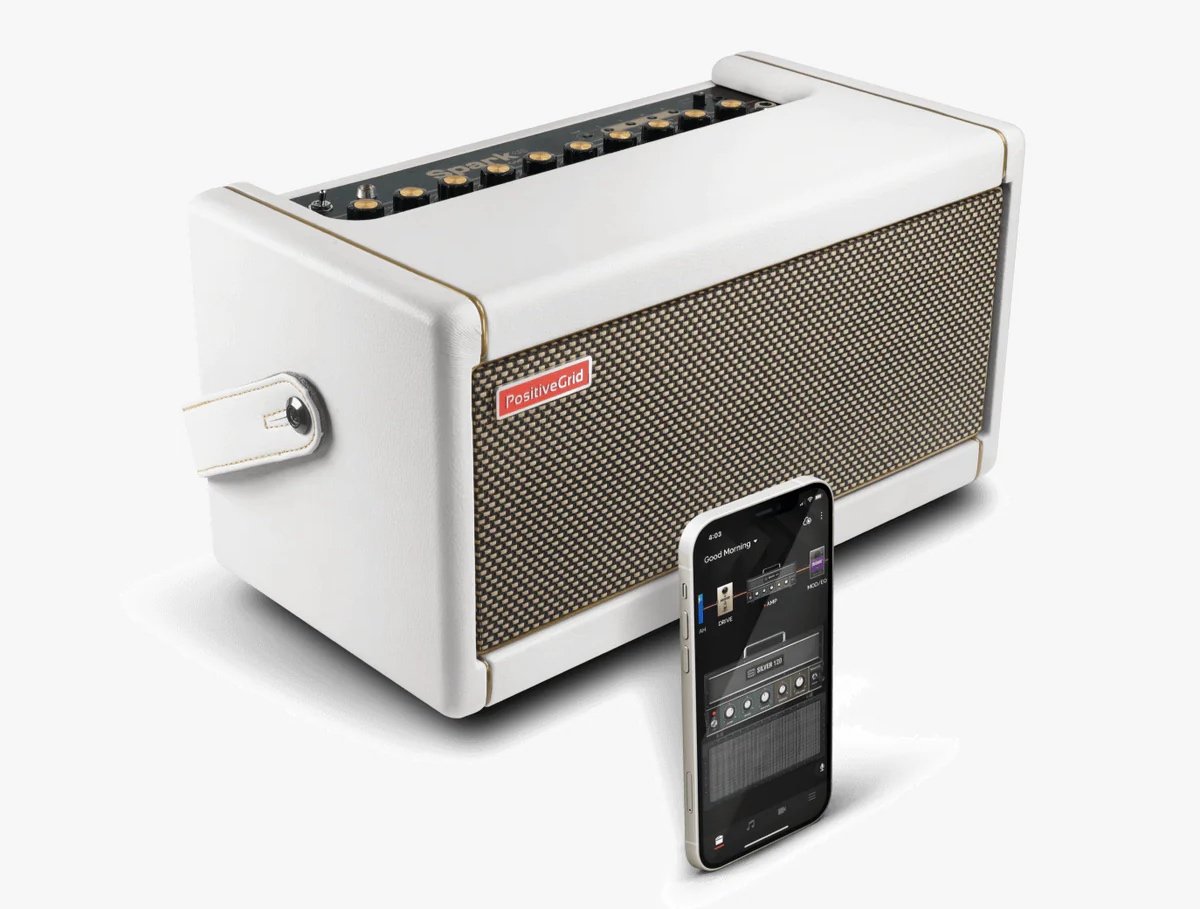A Home Bass Practice Amp That’s a Winner
Hello folks. This short article was influenced by a comment from reader / listener Steve. He noted that in the bass interview with Manny, we talked about bass amps, but did not make mention that in general guitar amps are not optimal for bass use. Oh you can do it and if you like the results, then good and done. However, guitar amps will typically not be built to handle the lower frequencies of bass instruments, particularly 5 and 6 string basses that have a low B string, and if you tune down from there, and folks do, it may be sub optimal. So if you will play bass, get a bass amp. Or as we will discuss here, a DSP based amp that does a decent bass amp simulation.
The other thing that Manny mentioned is that you will need a lot more power in a bass amp than in a guitar amp to get the speakers moving. This becomes less of an issue as the speaker size drops. but if you have a 50 watt solid state guitar amp, you will be looking for at least a 300 watt bass amp to work them together. effectively in a gig or jam setting.
At home, things may be different though as while you want to hear and to some extent feel the bass, no one else in your home or apartment is interested, so a smaller practice amp makes sense. Sadly, and this is my opinion, most low wattage bass amps don’t get loud enough for effective practice tones. So I did some shopping around and some basic play tests and to be completely blunt, came away underwhelmed until I got to the Ampeg Rocket 50 at about $330 CAD, and even given the Ampeg heritage backed up by the money and musical excellence of Yamaha, that 10 inch speaker just did not do it for me.
Returning home, I thought about my Yamaha THR II 30 which has a bass option. It’s a good little desktop amp but the bass simulation did not inspire me.
What About the Sparks?
Well there’s always the Spark family. As readers know, I am a fan of the Spark amps from Positive Grid. So I tried out the GO and the Mini and while the bass tones were quite decent because of the Spark’s computational audio, they just were not loud enough for even bedroom practice using the built in speakers. I turned to the Spark 40 which sits on the rack for my amps focused on recording. I loaded the factory provided profile called RB-800 which is based on the Gallien-Kruger 800RB. The Spark 40 gets loud enough for bedroom practice and sounds very good indeed, coming in at about the same price as the Ampeg Rocket 50. I preferred it to the physical bass amp. I can also use it as a USB based interface to the computer and my preferred DAW. The level coming into Logic Pro with the input fader at 0 dB is a bit light, but that’s tweak able.
Bass Options in the Spark System
Spark users know that there is a massive community who upload presets for different amps and effects chains but for the purposes of this article and to avoid option paralysis, I decided to use the default amp options built into the Spark app.
The four amps involved are the RB-600 which as noted is the Spark representation of the Gallien-Kruger 600RB. Next up is the Sunny 3000 based on the famous Sunn 300T. Third is the W600 which is based on the Eden WTP 600. The fourth amp is the Hammer 500, Spark’s implementation of the Aguilar Tone Hammer 500.
I connected my Spark 40 to a USB port and set it up as the input to Logic Pro. I then made four tracks, one for each amp and recorded them in sequence on their individual tracks. The bass I used for all the tracks is my Ibanez SRMS805 which is a five string multi scale bass with passive pickups and an Ibanez preamp that you can use or not. I chose passive, rolled the volume all the way up and left the balancer in the middle. I thought of using this bass because of the recent passing of Mr. Bartolini whose BH-2 pickups are used in this base. I had the microswitch set to bypass the EQ controls.
The samples in the following audio clip showcase the four Spark apps as noted above in order. They are all different and were all set exactly according to the Spark defaults for each preset.
Conclusions
As a home practice amp for bass, I don’t think that you can beat the Spark 40. if you also play guitar, electric and/or acoustic, you get even more value for your money. This article is shorter because the Spark 40 gets the job done. Please leave a comment or send in a question. I’m Ross Chevalier, until next time, peace.


